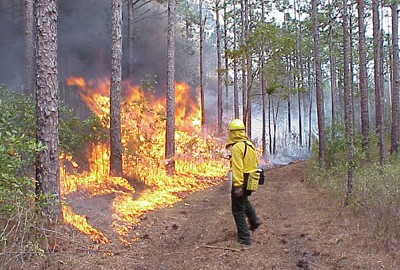Benefits of a Prescribed Burn
Just as with natural and human-ignited fires in the past, prescribed burning today accomplishes many important ecological functions and landowner objectives.
The benefits of prescribed burning are many. A burn removes accumulated fuels and therefore the risk of intense fires. Prescribed burning also changes the composition and density of existing vegetation. Burns at regular intervals reduce competing vegetation under forest stands. In pasture and range systems, fire is used to reduce encroachment of shrubs and invasive weeds. Wildlife habitat is improved with prescribed burns. New shrub, herb, and grass sprouts capture the quick flush of nutrients into the soil after a fire and are often more nutritious and palatable than older plants. Fires promote flower, seed, and fruit production, thus increasing available nuts and fruits for wildlife. Insects also increase rapidly after most fires.
Prescribed burning is one of the most cost effective forest management tools that the forest landowner has at his disposal for pine stand management. It provides multiple benefits for both timber and wildlife. These fires are managed in such a way as to minimize the emission of smoke and maximize the benefits to the site. Cost-share assistance is available from USDA-Natural Resources Conservation Service (NRCS) programs to help with forest management.



